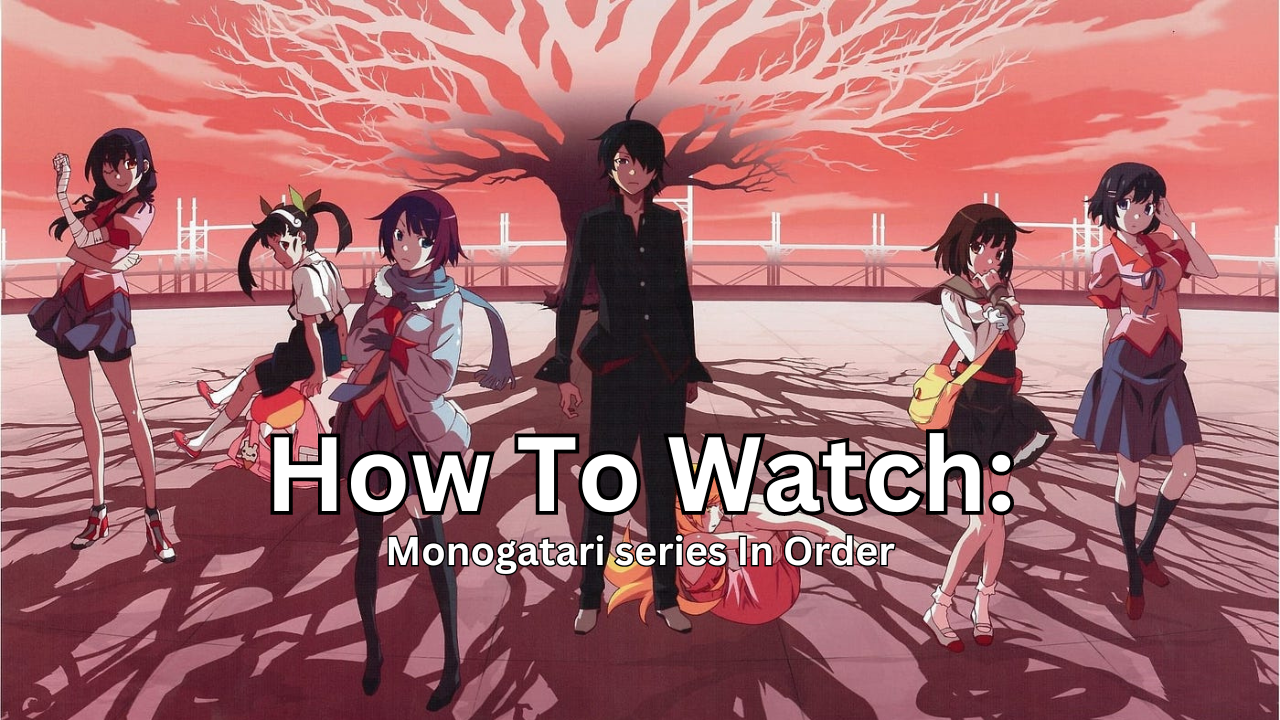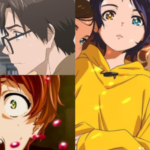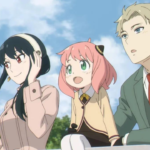Introduction
The Nisio Isin-created Monogatari manga, which studio Shaft turned into an anime, is well known for its complex narrative, distinctive animation style, and endearing cast of characters. Deciding which order to watch the series in can be difficult for newbies due to its complex narrative and rich backstory. But worry not—we’ve put together a thorough guide that draws from a number of reliable sources to assist you in smoothly navigating the Monogatari realm.
Release Order vs. Chronological Order of Monogatari series
Whether to watch the Monogatari series in chronological or release order is a hotly contested topic. The chronological order portrays the events in a linear method, while the release order keeps the intended rhythm and discloses information gradually. The chronological arrangement may help readers grasp the story’s timeline more clearly if they are unfamiliar with it.

Chronological Order
Watchers can experience the events in the Monogatari series as they happen inside the story’s timeframe by adhering to the chronological order. Below is a summary of the chronological order:
- Kizumonogatari: This trilogy of films acts as a preface to the whole series, giving important background information on the events leading up to Koyomi Araragi’s interactions with Shinobu Oshino, the vampire.
- Nekomonogatari: Kuro (Black): This series explores Araragi’s initial meeting with Tsubasa Hanekawa and the phenomenon known as “Black” Hanekawa, and it is set just before Bakemonogatari.
- Bakemonogatari: Hitagi Senjougahara, Mayoi Hachikuji, and Suruga Kanbaru are just a few of the supernatural beings with which Araragi comes into contact in the first episode of the series.
- Nisemonogatari: carries on the narrative from Bakemonogatari, adding new characters and tensions as it examines Araragi’s relationships with his sisters, Karen and Tsukihi.

- Nekomonogatari: Shiro (White): This series centers on Hanekawa’s battles with her own “White” doppelganger and is set after the events of Nisemonogatari.
- The second season of Monogatari, which has several story arcs, expands on the character arcs and introduces new ones such “Mayoi Jiangshi” and “Hitagi End.”
- Hanamonogatari: This episode follows Suruga Kanbaru as she navigates her own personal struggles and is set after the events of Monogatari Series: Second Season.
- Tsukimonogatari: This television series delves into Araragi’s experiences with an enigmatic darkness, chronicling the events of Hanamonogatari.
- Owarimonogatari (First and Second Seasons): explains more about the main story and goes into Araragi’s background and relationship with Ougi Oshino.
- As the series’ epilogue, Zoku Owarimonogatari brings Araragi’s voyage to a close and ties up any loose ends.
Release Order
As an alternative, you can watch the Monogatari series in the order that the authors intended for viewers to experience the narrative—that is, the order in which the series was released. Although this arrangement may appear haphazard at first, it provides a more sophisticated comprehension of the characters and their evolution over time.

Extra Viewing Choices:
Movies and Specials: A number of movies and specials that enhance the plot are available in addition to the regular series. These consist of the three Kizumonogatari film series and several character-focused specials.
Novels: Nisio Isin’s light novels served as the inspiration for the Monogatari series. Reading the original source material can help readers have a deeper grasp of the characters.
Conclusion
Whether you decide to watch the Monogatari series in chronological order or release order, it’s a wonderful experience full of rich characters, complicated narrative, and striking visuals. You can take a trip around the Monogatari universe and lose yourself in its engrossing story by consulting this thorough guide and making use of the available tools.







